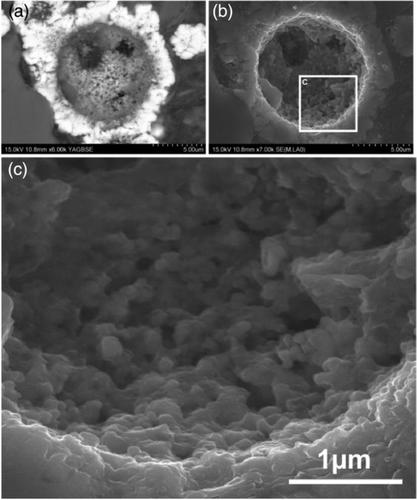The microbial controls on the deposition of Pb‐Zn minerals in carbonate‐hosted Tunisian ore deposits
IF 0.8
4区 地球科学
Q3 GEOLOGY
引用次数: 1
Abstract
The Ain Allega, Mjar Hannech and Sidi Driss Pb‐Zn‐Ba‐Sr‐As‐(Hg) deposits in northern Tunisia are hosted in a post‐nappe anticline with a core of a Triassic evaporite diapir affected by the NE–SW‐trending Ghardimaou‐Cap Serrat and E‐W lineament. The ore minerals show different styles; particularly, impregnation in dolomite, cement of breccias, replacement ore and open space filling in the dissolution cavities and fractures. Ore minerals include sphalerite, galena, marcasite, pyrite and cinnabar. Principal gangue minerals are composed of barite, celestine, calcite, dolomite and quartz. The orebodies are hosted by Triassic carbonate rocks (Ain Allega ore deposits), Cretaceous carbonate rocks (Mjar Hannech ore deposits) and by the volcanoclastic layers (Sidi Driss ore deposits). These host rocks show hydrothermal alteration, dissolution and brecciation. Sphalerite in the carbonate‐hosted Zn‐Pb deposits in Tunisia occurs as nano‐size microglobular blebs and peloids and forms finely‐laminated bands with wavy and even ripped up features. Peloids are present in collapse breccias of karst cavities. Peloids (5–100 μm) and bacterial filaments (1 μm long) locally form the common micro‐texture of the sulfide mineralization. The core and the shell of peloids are composed of different minerals; there are 1–3 shells and each shell is 1–1.5 μm thick, commonly with coarse crystals. These textures probably represent fossil microbial mats as in‐situ sulfate‐reducing bacteria products and are similar to nano‐textures observed in bacterial biofilms. Electron microscopy, combined with major element changes (Zn, Pb, As, Fe, and Cd) and sulfur isotope values suggest that sphalerite nano‐textures and nano‐spheres are associated with fossilized bacterial‐mat. The δ34S values of sphalerite (−43.9 to +22.38‰) show that the microbial production of H2S controlled sphalerite precipitation. The biogenic nano‐ to macro‐textured sphalerite and sulfur isotope data suggest that microbes had an important role in the genesis of carbonate‐hosted Zn‐Pb deposits in Tunisia during the Miocene.

微生物对突尼斯碳酸盐岩矿床中铅锌矿物沉积的控制作用
突尼斯北部的Ain Allega、Mjar Hannech和Sidi Driss Pb - Zn - Ba - Sr - As - (Hg)矿床赋存于后推覆背斜中,其核心为三叠纪蒸发岩底喷岩,受NE-SW -走向的Ghardimaou - Cap Serrat和E - W构造的影响。矿石矿物表现出不同的风格;主要表现为白云岩浸渍、角砾岩胶结、补矿、溶蚀孔洞和溶蚀裂隙的空隙充填。矿石矿物有闪锌矿、方铅矿、黄铁矿、朱砂等。脉石矿物主要有重晶石、天青石、方解石、白云石和石英。矿体赋存于三叠系碳酸盐岩(Ain allea矿床)、白垩系碳酸盐岩(Mjar Hannech矿床)和火山碎屑层(Sidi Driss矿床)。这些寄主岩石表现为热液蚀变、溶蚀和角化作用。在突尼斯的碳酸盐型锌铅矿床中,闪锌矿以纳米级微球状泡和球状体的形式出现,并形成具有波浪状甚至撕裂特征的精细层状带。似球粒存在于溶洞的塌陷角砾岩中。球状体(5-100 μm)和细菌细丝(1 μm长)在局部形成了硫化物矿化的共同微观结构。球状体的核和壳由不同的矿物组成;有1-3个外壳,每个外壳厚1-1.5 μm,通常有粗晶。这些结构可能代表化石微生物垫作为原位硫酸盐还原细菌产物,与细菌生物膜中观察到的纳米结构相似。电子显微镜、主要元素变化(Zn、Pb、As、Fe和Cd)和硫同位素值表明闪锌矿纳米结构和纳米球与细菌垫化石有关。闪锌矿的δ34S值(−43.9 ~ +22.38‰)表明微生物生产H2S控制了闪锌矿的沉淀。生物成因的纳米-宏观结构闪锌矿和硫同位素数据表明,微生物在突尼斯中新世碳酸盐型锌- Pb矿床的成因中发挥了重要作用。
本文章由计算机程序翻译,如有差异,请以英文原文为准。
求助全文
约1分钟内获得全文
求助全文
来源期刊

Resource Geology
地学-地质学
CiteScore
2.30
自引率
14.30%
发文量
18
审稿时长
12 months
期刊介绍:
Resource Geology is an international journal focusing on economic geology, geochemistry and environmental geology. Its purpose is to contribute to the promotion of earth sciences related to metallic and non-metallic mineral deposits mainly in Asia, Oceania and the Circum-Pacific region, although other parts of the world are also considered.
Launched in 1998 by the Society for Resource Geology, the journal is published quarterly in English, making it more accessible to the international geological community. The journal publishes high quality papers of interest to those engaged in research and exploration of mineral deposits.
 求助内容:
求助内容: 应助结果提醒方式:
应助结果提醒方式:


